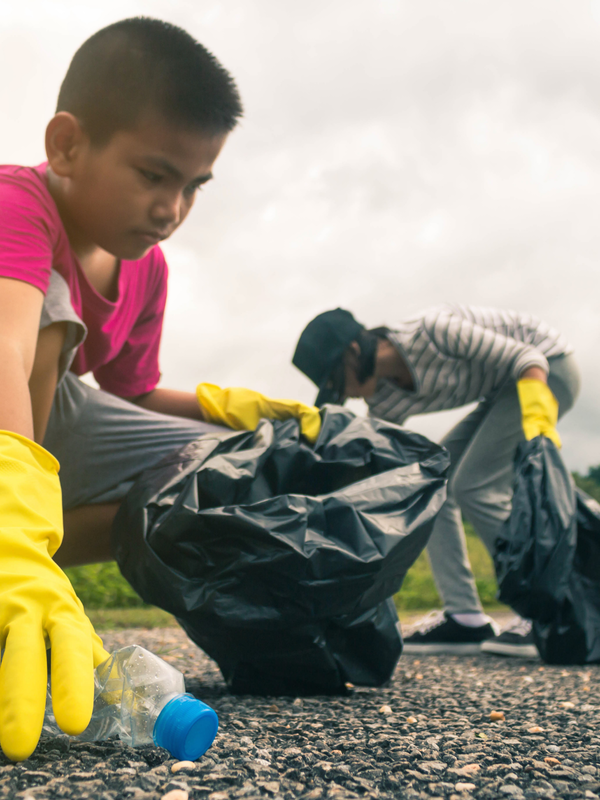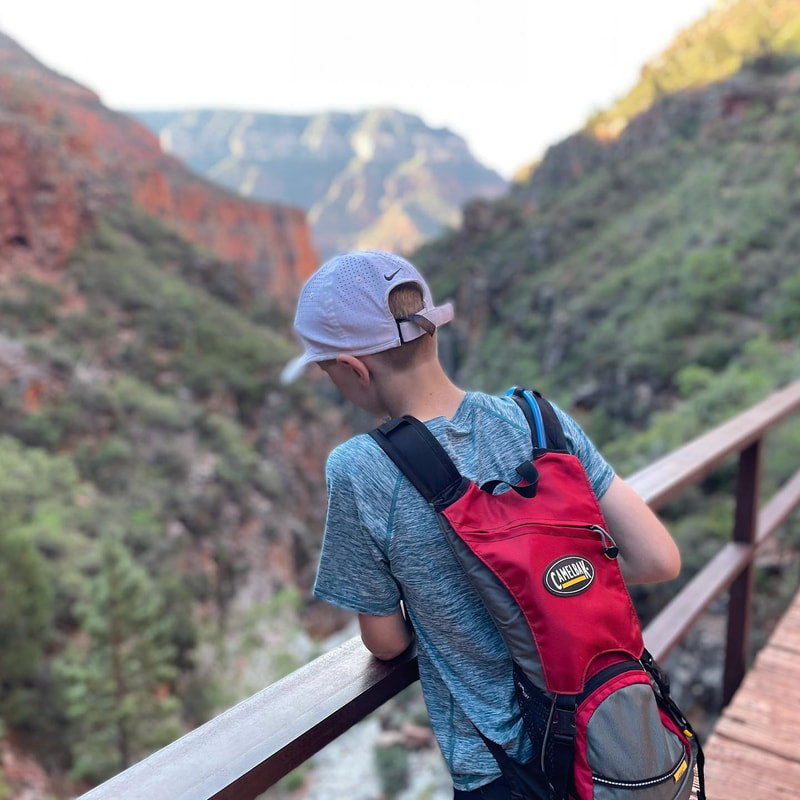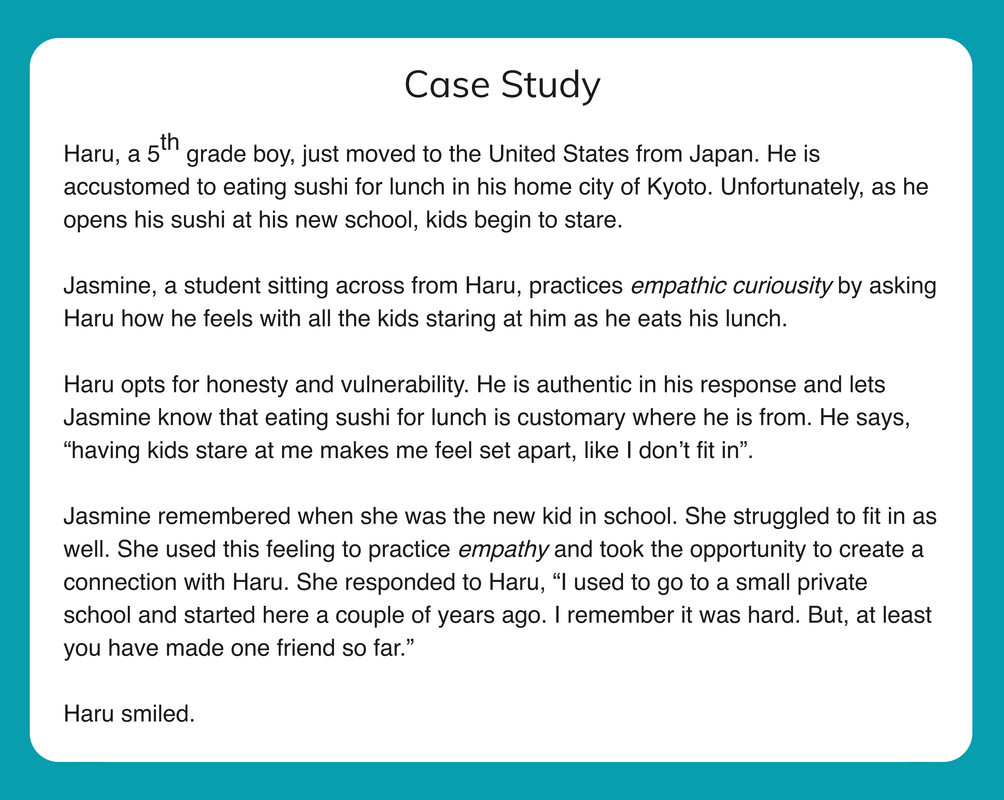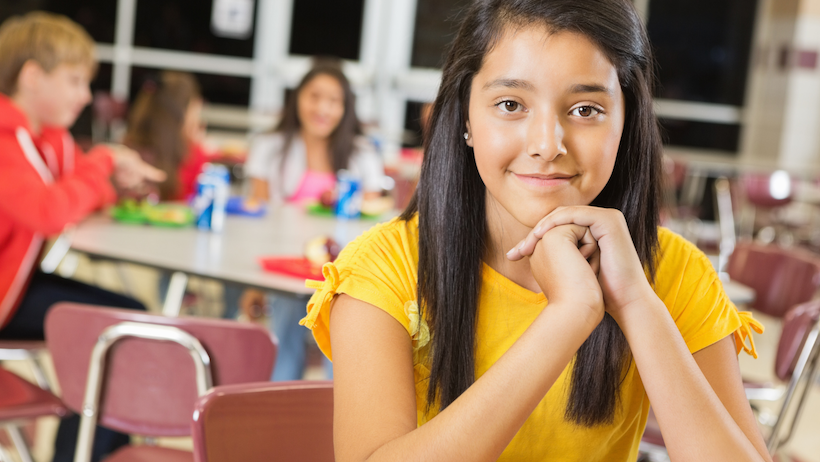|
Are you fostering effective global citizenship in your students?
Cultured Kids believes there are three criteria to effective global citizenship:
If these key criteria are the identifiable characteristics for an effective global citizen, what are the elements needed to achieve them? I. Identity Development
Identity is a complex topic. There are many facets to our identity and certainly not enough time in the school day, or year, to explore them. But, there are ways to support student identity development without having to dig into the complexities. Cultured Kids creates programs that will help students answer this question: Who Am I?
A recent article: Help Me Discover Who I Am, shares our approach to support identity development. Our primary goal is to increase learner self-curiosity! Our Art & Storytelling Book Club Curriculum provides a fun and engaging environment for learners to explore their identity and increase their sense of belonging. Ultimately, we are interested in finding some foundational aspects of their identity to serve as a foundation while they continue to explore the fixed and fluid aspects of who they are over time. We are intent on developing a level of self-interest and self-curiosity to encourage lifelong learning about themselves. We consider identity development the first step toward effective global citizenship. Without a true understanding of self you can still impact this world in a positive way, but we would argue, you will not be as effective and your impact not as grand. II. Empathy
The understanding and practice of empathy are necessary for effective collaboration and execution.
In 2012, Amos Winter, a mechanical engineering student at MIT, presented at TEDx Boston. In a short presentation Amos shared the impact of his Leveraged Freedom Chair (LFC). Empathy was the driving force behind this new innovation. By putting himself into the shoes of his target audience – wheelchair bound residents in rural Tanzania - he was able to create a functional, repairable, and affordable final product. Empathy was also a key component to stakeholder collaboration. Amos could safely persevere through multiple iterations with colleagues, wheelchair users in Tanzania, local repair shops in Tanzania, and corporate partnerships, before reaching his final product. Our learners have the potential to create a positive impact in this world right now. But, the effectiveness of their impact will depend on the level of empathy they provide one another. Sharing and executing new ideas requires vulnerability. If this vulnerability is not met with empathy, their potential will be disrupted. Effective global citizenship will capitalize on learners’ individual strengths, but it will also challenge weaknesses. The willingness to accept personal discomfort for the sake of their impact will determine the level of effectiveness they will have in this world. III. Belonging
How do you create an environment where students willingly choose discomfort for the sake of impact?
You create a culture of belonging! We define belonging as a learners ability to know and safely share their authentic self with others. If they know who they are (identity) and can safely share with others (accomplished with empathy), then they will be more likely to share challenges, ask for help, or learn a new skill. In addition, learners’ sense of belonging will expand their pool of collaborators, empower them to move forward, and remind them that their peer connections are not dependent on their success. In a recent article: How To Bolster Belonging At Your School, writer Lindsay Lyons shares why belonging is so important and offers some practical ways to support your learners. Personal Example
My own belonging journey has contributed to the passion I have for supporting student belonging. I know first-hand the challenges a child will face if they are unsure of who they are or where they fit in. I feel fortunate, as an adult, to have accepted the opportunity to explore who I am and to bravely share my true self with others.
While I still struggle with this sense of belonging, I am confident enough to lean into the discomfort personal and professional growth offers. Cultured Kids would not be here without them. I am certain I have had to endure more suffering to refine those areas of growth in my life, than enjoy the comfort of utilizing my existing strengths. Effective global citizenship can be exhausting, disheartening, and at times, debilitating. However, as learners persevere through the challenges effective global citizenship offers, their identity, their community, and their impact will grow stronger. As we continue to develop new programs, we will be considering the value self-awareness, self-confidence, and empathy have on our future leaders to be effective global citizens.
0 Comments
The Need for Belonging and How We Help It Flourish in Our Schools
Belonging at school is a critical component of student success, academically, socially, and emotionally. However, across the globe, students have been reporting experiencing lower rates of belonging in recent years. Upon reading this, the questions for educators are as follows: How exactly does a student’s sense of belonging impact their life in and out of school? How do I know if my students feel like they belong at school? What can we do to foster a sense of belonging in all of our students? Let’s address those questions now.
A Brief History of Empathy
Empathy is a rather new discovery and has evolved since its first introduction to the United States in the early 1900’s. The word empathy means “in-feeling”. The Greek “em” means “in” and the Greek “pathos” means “feeling.”
Upon its origination, it was characterized as a person’s ability to project their feelings into the world. In a Psychology Today article, Dr. Susan Lanzoni Ph.D., shares a couple of examples of this:
Like any newfound knowledge; time, technology, and curiosity, lead to improved understanding and additional discoveries. As we neared the mid-1900’s psychologists began to consider a person’s empathy for others; the ability to put themselves in others' shoes. Then, in the late 1900’s neuroscientists discovered mirror neurons. This added a new layer of interest and understanding about empathy. Today, empathy, like curiosity, is riddled with complexity. Social Psychologist C.Daniel Batson, an empathy researcher, explores eight different facets of empathy. His work, while interesting, is far too complex when it comes to our focus on school communities. Why is this brief history of empathy important for school leaders?
Empathic Curiosity
Last week we shared an article, “Help Me Discover Who I Am", about the connection between learner identity development and curiosity. One of the three types of curiosity shared in this article is called empathic curiosity. Empathic curiosity motivates understanding about the thoughts and feelings of other people.
This is where empathy and curiosity collide. Understanding and practicing empathic curiosity can help your learners be known. It is through this interest and questioning of one another’s thoughts and feelings that opportunities for authenticity and connection are created. However, empathic curiosity will not lead to authenticity and connection without empathy.
The above case is fictitious and uncommon in most school communities. In fact, it is uncommon in life. But, this is where Cultured Kids is making an impact. Within the provided case are the following steps:
However uncommon the outcomes, this scenario is widespread in American schools, especially in diverse metropolitan areas. It is not beholden to food, but is expressed through differences in clothing, areas of interest, customs celebrated, hair products used, languages spoken, and physical characteristics. If any one of the following steps was not executed the opportunity for connection would be lost, trust not established, and the sense of belonging diminished. While it was Jasmine’s empathic curiosity that created the opportunity for connection, it was her practice of empathy that created the connection. Additionally, her ability to practice empathy required Haru’s vulnerability. Empathy As A Bridge To Belonging
If vulnerability is present, empathy will be the bridge needed to establish trust. You can easily replace vulnerability with authenticity here. When your learners are confident and understand who they are, they can choose whether or not to share who they are with others. Choosing authenticity means risking physical or emotional harm (vulnerability).
The more your students choose authenticity and practice responding to authenticity with empathy, the more trust will prevail. From this place of trust an increased sense of belonging and greater school unity will follow. Global Citizenship
Now, take a moment to transition from your internal perspective (your school community), to an external perspective (the world). Empathy...
Your ability to adopt and practice empathy as a school community will not only foster school unity, but will lay the foundation for your learners to succeed as effective global citizens. Let's Build Bridges
Apathy is a lack of feeling; to not care. Apathy is the opposite of empathy. Ineffective global citizens will be apathetic. How will they cross the chasm? We need to build bridges of empathy.
While giving a speech at Northwestern In 2006, Barack Obama said, “As you go on in life, cultivating this quality of empathy will become harder, not easier. There’s no community service requirement in the real world; no one forcing you to care.” Understanding that empathy development will become more challenging for learners as they age means that apathy will become easier. Cultured Kids does not exist to merely help kids understand and practice empathy, but to own it! We want empathy to be a part of each child’s way of life. We want children to lead with empathy and to be shielded from apathy. Cultured Kids sees school communities as a microcosm of the world. This microcosm is not merely an institution to support children's' education, it is a potential model for what is possible to achieve in the world. By partnering with leaders who prioritize empathy, we are ensuring the next generation of world leaders have a chance at effective global citizenship.
Who Am I?
These three simple words live in the minds of many children in your school community. This question peaks at the convergence of identity and curiosity, and results in a complexity not easily understood by them.
It is our hope that all learners will be able to ask and answer this question. We believe their sense of belonging depends on it. However, there is a danger to this question as well. If your students are not provided a safe environment to discover who they are, they will be susceptible to believing who others say they are. I liken a child’s identity to a mound of soft clay. The form the clay takes will depend on the artist shaping it. What influencers are molding your students’ identities? Are your students making their own contributions? Cultured Kids is on a mission to unify school communities. Positive identity development and healthy self-discovery are key ingredients to our desired outcome. In order for a child to be truly known by their peers, they need to know themselves. Different Types of Curiosity
In Ian Leslie’s book, Curious, he shares three types of curiosity:
Let’s consider anthropologist Jane Goodall as an example to showcase each of these types of curiosity. When Jane was a child she was given a stuffed chimpanzee by her father. This gift sparked diversive curiosity, which motivated an interest in, and exploration of, animals. As she grew up her level of interest evolved. It was Jane’s epistemic curiosity (and some financial support) that led her to work on a farm in Kenya and earn a PhD in Ethology. Finally, Jane’s extensive research living among chimpanzees was the result of her empathic curiosity. Diversive Curiosity
Hopefully we all give into diversive curiosity throughout our lives. Learning new skills, exploring new lands, and meeting new people help us to become more adaptable, likeable, and healthy.
It is easy to see this type of curiosity in your lower elementary learners. Children enroll at school with a sense of awe and wonder about the world. We are all familiar with the “Why?” stage children go through. In these early stages, Cultured Kids aims to nourish and grow diversive curiosity. Through compare and contrast, learners can explore differences and similarities between themselves and peer groups globally. Activities that support exploration and discovery help to solidify some aspects of their individual identities. Additionally, children are also gaining foundational building blocks for constructive discussions about culture, race, and ethnicity. By consistently encouraging diversive curiosity, learners will identify areas of deeper interest. Interests that will motivate a disciplined effort towards deeper understanding as they grow older. Epistemic Curiosity
In order to unify your school communities, each community member needs to feel a healthy sense of belonging. We define a healthy sense of belonging as a child’s ability to know and safely share their authentic self with others.
Knowing their authentic selves requires epistemic curiosity and safely sharing it requires empathic curiosity. We encourage and support these types of curiosity with upper elementary and middle grade students. Greater self-esteem, self-confidence, and student voice come with a secure understanding of who they are. But, supporting this deeper process of self-discovery has other benefits as well:
Like Jane Goodall, many of your students will trace their future passion back to a specific event or experience as a child. Alternatively, some will find comfort in diversive curiosity and change professions, locations, or partners regularly, craving new places, experiences, and people. Through it all, one person will remain consistently present: themselves! However, just like our professions, life partners, and locations are not fixed, neither are some aspects of our identity. Our life experiences will consistently challenge us to evaluate who we are. Self-curiosity and positive identity development will support unity in your schools. But, they will also prepare learners for life. Empathic Curiosity
Quite often, we make assumptions about others. We can do this with our colleagues, staff, and students. Educators and students will do this as well. It is part of the human condition.
When we make assumptions, we trade questioning for knowing. For example, I can assume Brenda is not facilitating morning meetings on a regular basis with her class because she has poor time management. Believing I know this, stifles my curiosity. Alternatively, if I rely on my empathic curiosity and begin asking questions about Brenda and her class, I would come to some sharp realizations. Brenda’s students all rely on the school breakfast for a healthy meal. In addition, a large group of Brenda’s kids are the last group to get dropped off in the morning. Brenda knows hunger will stand in the way of her students learning. So, she prioritizes their nourishment over morning meetings. What does empathic curiosity have to do with your students' identity development? There are two reasons why this type of curiosity is important:
Does Curiosity Precede Your Desired Achievement?
Ken Robinson said, “Curiosity is the engine of achievement”. If this is true, then school leaders should be prioritizing question development. Questions foster deeper curiosity.
A Right Question Institute study, based on question-asking data gathered by the National Center for Education Statistics, shows a steady decline in question asking throughout a learners K-12 journey. An average of 100 or more questions a day is depleted to a handful by the time children graduate from high school. There are many reasons why this shift occurs. In Warren Berger’s, The Book of Beautiful Questions, he lists five enemies of questioning: fear, knowledge, bias, hubris, and time. Your educators, students, and parents may embody one or more of these enemies of questioning at any moment. We believe “Curiosity is the engine of achievement” because achievement can take many forms. No matter what form you want it to take, the statement still serves true. When considering your students and their journey of self-discovery, we believe curiosity is the engine of self-exploration, self-understanding, and self-acceptance.
|
�
Categories
All
Archives
September 2023
|
Follow Us
© Cultured Kids Inc.







